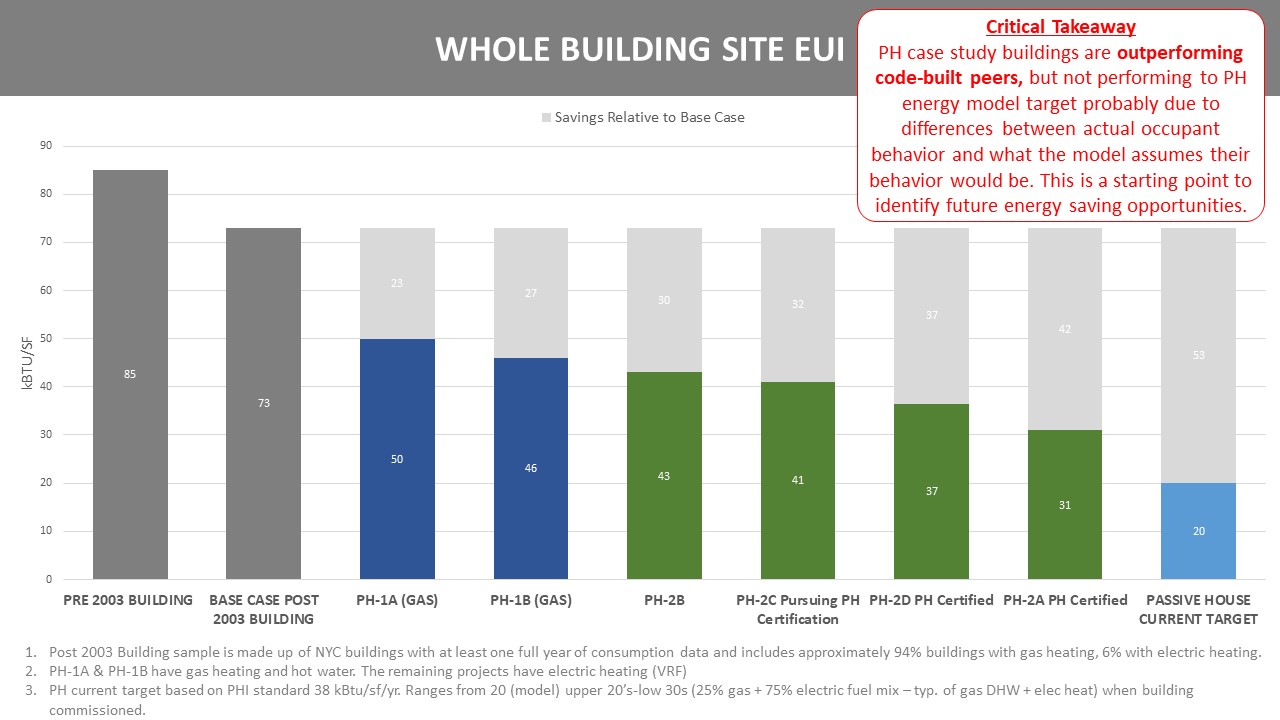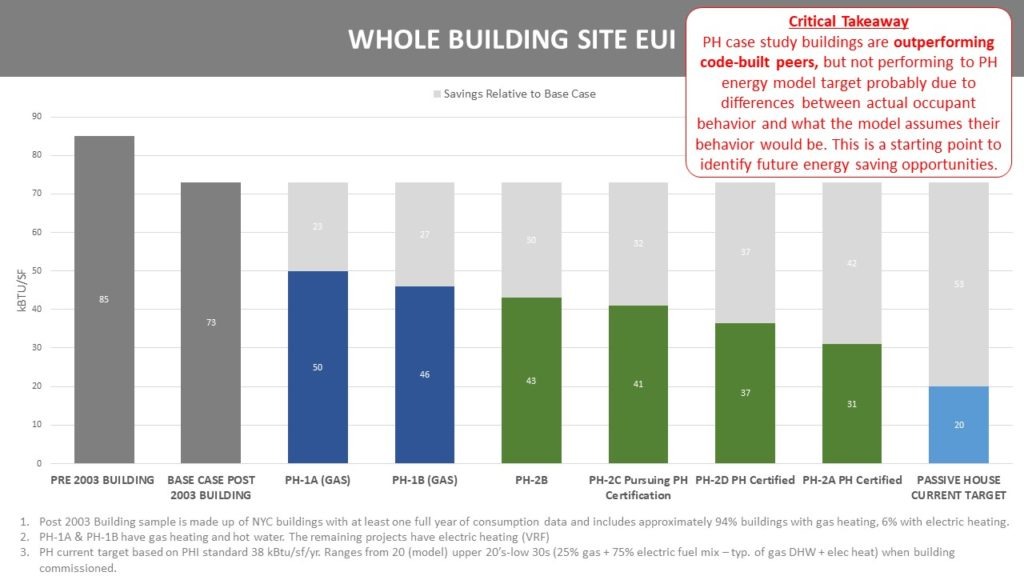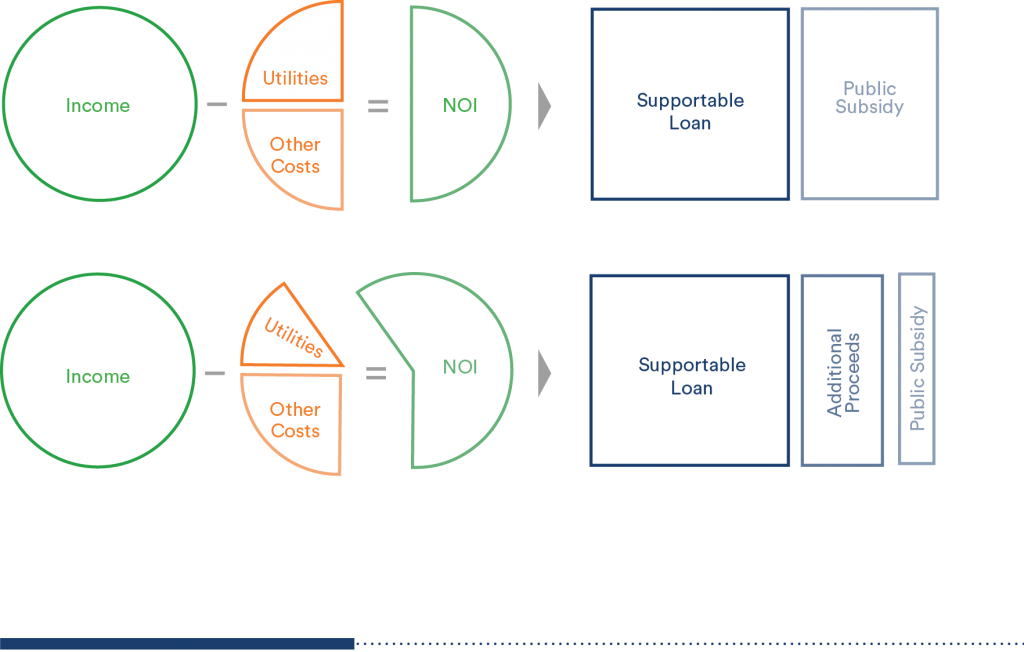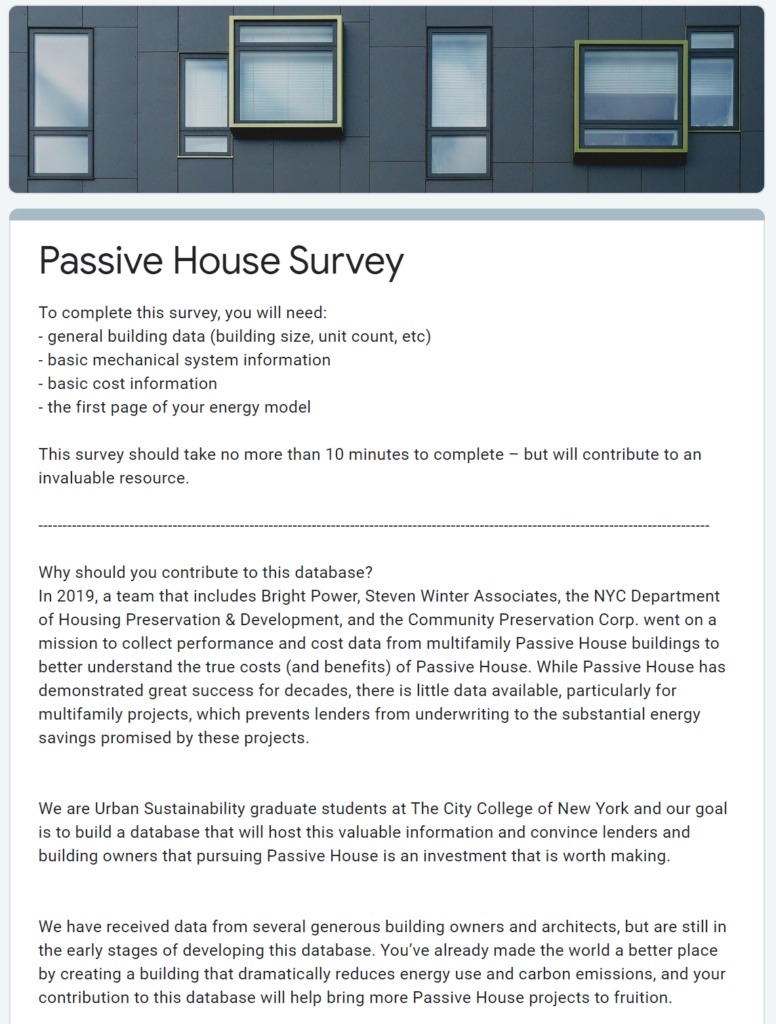

Blog
In a collaborative effort that merged financing and energy use analysis, the New York City Passive House industry finally has performance data. Working together with Bright Power, The Community Preservation Corporation, and NYC Department of Housing Preservation & Development, this analysis is the first of its kind.

In a collaborative effort that merged financing and energy use analysis, the New York City Passive House industry finally has performance data. Working together with Bright Power, The Community Preservation Corporation, and NYC Department of Housing Preservation & Development, this analysis is the first of its kind.
Energy Use Intensity (EUI) measures energy consumption on a per square foot basis to compare buildings and allows interested parties to gauge one building’s usage to another (or to a group of buildings with a similar use type). The study team compared the actual EUI of six completed Passive House-certified and Passive House-like buildings against recently completed multifamily code-built buildings. Information was gleaned from the EnergyScoreCards database and the Passive House (PH) target. The weather normalized data indicates the Passive House and Passive House-like buildings are performing much better than the comparable code-built group, but are not quite as efficient as the Passive House threshold. Industry leaders have recognized this performance gap – between predictive assumptions that rely on standardized patterns of use and the real-life habits of actual people living in the building. This gap has been a hot topic at the past several New York Passive House conferences. The results from the current analysis provide a starting point now, so the industry can focus on strategies to continue to reduce EUIs.

The study team had two other important observations about the PH and PH-like buildings. Gas heated buildings had a higher EUI than electrically heated buildings. And, Passive House-certified buildings performed better than those that did not pursue certification. These initial findings require a larger sample set to verify the trend.
A critical aspect to funding affordable housing is energy cost savings and underwriting. The study points to significant savings compared to lender energy budgets that have traditionally relied on data from recently constructed code-built buildings. As a result, for example, the energy savings including renewables compared to the budgeted assumptions ranged from 39-79%. Moreover, lenders do not typically account for savings from energy efficiency, however based on the data, the study team recommends underwriting to the savings. With lower operating costs, there will be less reliance on public subsidies, and more funding available for more affordable housing projects (See figure 2).

The team is currently fielding funding opportunities and placing finishing touches on a White Paper.
The City College of New York’s Urban Sustainability capstone students have created a survey to collect multifamily utility data, construction cost data, building specifications, and team experience. It takes 10 minutes to complete.
Call to Action: Please use this link to fill our the Multifamily Passive House Survey: https://bit.ly/3hYl2fs

Virtual presentations include the North American Passive House Network Conference on June 24 (recording now available), and upcoming presentations at the New Gravity Conference on August 5-7 and Building Energy NYC on September 23-24. Stay tuned as the study team pursues additional funding for Phase 2, which will seek and analyze more granular energy and financing information across a wider swath of PH buildings.
Contributor: Joanna Grab, Senior Sustainability Consultant
Steven Winter Associates